Employment intermediaries: travel and subsistence
Introduction.
In a move to restrict the ability of those working through intermediaries to claim travel and subsistence expenses unavailable to ordinary employees, the Government introduced specific rules for travel and subsistence for intermediaries from 6 April 2016.
The costs of travel and subsistence are an allowable deduction for employees only if the travel is to or from a place other than the employee’s permanent workplace in order for the employee to perform the duties of his employment. The costs of commuting between the employee’s home and a permanent workplace are not deductible (see the Travel expenses and Commuting expenses guidance notes).
Before introduction of these rules, workers providing their services through an intermediary, such as a personal services company (PSC) or an umbrella company, could treat the locations at which they carried out separate engagements as temporary workplaces of their employment under that intermediary. This then enabled such workers to claim tax relief for costs of commuting

Access this article and thousands of others like it free for 7 days with a trial of TolleyGuidance.
Access this article for free with a 7 day trial of tolley ® guidance and benefit from:.
- Expert practical tax guidance
- Ready-made templates, step-by-step-guides, interactive flowcharts and checklists
- The latest news updates, insights and analysis
** Free trials are only available to individuals based in the UK, Ireland and selected UK overseas territories and Caribbean countries. We may terminate this trial at any time or decide not to give a trial, for any reason.
Powered by Tolley ® Guidance
Related documents:.
- Implementing off-payroll working (IR35) for large/public clients
- CIS ― overview
- Risk assessment for off-payroll working (IR35) ― for small clients
- HMRC challenge of a status determination statement
- Off payroll working (IR35) for small clients ― particular NIC points
- MSCs ― the deemed employment payment
- Administrative Court Judicial Review Guide 2024 published
- CIOT Budget representation on Repayment interest
- CIOT letter to the Exchequer Secretary to the Treasury on the Business Tax Roadmap
- Budget Responsibility Act 2024
- SI 2024/949 Supreme Court Rules 2024
- CJEU overturns decision on Apple tax rulings
- CIS ― subcontractors
- Off-payroll working (IR35) ― public sector, large and medium clients ― overview
- Off-payroll (IR35) ― the notional contract
- Calculating and accounting for the deemed direct payment for off payroll working (IR35)
- Indirect and third party relationships ― overview
- CIS ― contractors
- Web page updated on 28 Mar 2024 11:20
Home / Tolley Tax Guidance / Employment Tax / Engaging workers outside payroll
Popular Articles
Married couple’s allowance.
Married couple’s allowanceThe married couple’s allowance (MCA) is only available if one of the two spouses or civil partners was born before 6 April 1935. This means that one member of the couple must be at least 89 years old on 5 April 2024 to qualify for an allowance in the 2023/24 tax year.There
Loans written off
Loans written offCompanies sometimes provide directors, employees or shareholders with low interest or interest-free loans either as part of the reward package or on special occasions to help the individual meet significant expenditure. The employment income implications of these loans are discussed
Entity classification
Entity classificationImplications of entity classificationIf a subsidiary is established, it is important to determine how it will be treated for UK tax purposes as this will determine the basis on which it is taxed. A subsidiary may either be transparent (like a partnership, where the individual
- General Enquiries + 44 (0)33 0161 1234
- Exam Training + 44 (0)20 3364 4500
- About Tolley
- Tolley Knowledge
- Tolley Experts
- Help & Support
- Protecting human rights: Our Modern Slavery Act Statement
- Cookie Settings
- Privacy Policy
- Terms & Conditions
EXAM TRAINING
- Exam Training
- Apprenticeships
RESEARCH AND GUIDANCE
- TolleyGuidance
- TolleyLibrary
- FRC Publications
- eStore (Books)
PROFESSIONAL DEVELOPMENT
- Taxation Magazine
- Tax Journal Magazine
- Online CPD Seminars

The temporary workplace: applying the intention or expectation test
Employment tax, large corporate.

Share this article
We consider what constitutes a temporary workplace and the significance that expectation plays in determining whether related expenses attract tax relief.
What is the issue?
If an employee attends, or expects to attend, a workplace for 40% or more of their working time at a particular workplace over a period of more than 24 months (the ‘40/24’ test), it cannot qualify as a temporary workplace.
What does it mean for me?
Employers often feel that the intention or expectation test cannot be easily operated or proven in practice.
What can I take away?
Undertake a review and record where employees are based for the purposes of travel and subsistence, including any secondments or temporary assignments.
The travel and subsistence rules are complex and can be difficult for employers to apply on a consistent basis, particularly given the context of changing work patterns and mobility of workers.
As explained in our previous article, ‘The long and winding road’ (June 2022), a workplace that an employee attends for the purpose of performing a task of limited duration or for some other temporary purpose is potentially a temporary workplace under the Income Tax (Earnings and Pensions) Act (ITEPA) 2003 s 339(3).
This and the associated criteria are all important points to consider because when a journey qualifies for tax relief, employees are also entitled to claim tax relief on subsistence expenditure that is incurred on that journey. This includes:
- any necessary subsistence costs incurred in the course of the journey;
- the cost of meals necessarily purchased whilst an employee is at a temporary workplace; and
- the cost of the accommodation and any necessary meals where an overnight stay is needed as part of the journey. This will be the case even where the employee stays away for some time.
In this article, we explore more on the 24-month rule at ITEPA 2003 s 339(5), which forms part of the test of whether a workplace is a temporary workplace. This could result in more challenges than normal following the Covid pandemic and the move to hybrid working patterns in the UK and international employment situations.
What is a temporary workplace?
Remember that the test which prevents a workplace from being a temporary workplace is where an employee attends it in the course of a period of continuous work that lasts more than 24 months, or where it is reasonable to assume that it will be in the course of such a period that will last more than 24 months. This is known as the 24-month rule or is often described as the detached duty rule. This means that where the employee has spent, or is likely to spend, 40% or more of their working time at that particular workplace over a period of more than 24 months (the ‘40/24 test’), it will be a permanent workplace.
In terms of the 40% rule, ITEPA 2003 s 339(6) states: ‘For the purposes of sub-section (5), a period is a period of continuous work at a place if over the period the duties of the employment are performed to a significant extent at the place.’ The word ‘significant’ is not defined in statute, but it is covered in HMRC’s Employment Income Manual at EIM32080, which states that anything less than 40% is not significant.
The significance of expectation
One of the key problem areas is the words ‘reasonable to assume’. Note that there is no reference to either the intent of the employer or employee. Although this is often described as intention, it is also sometimes referred to as expectation.
The rule is not just about the amount of time being less than 24 months for relief to be given, but the intention or expectation of the parties at the time the period was originally agreed and at any time subsequently.
On first inspection therefore you would think that if an assignment or secondment to a different location was for less than 24 months, the employee would meet the temporary workplace conditions for that period. If the employer extends the assignment to more than 24 months, then the workplace is only temporary up until the date that the assignment is extended. If at the outset it is known that it was going to be for longer than 24 months, then relief is not due from the start.
Problems can arise where the outcome does not match the original intention. If a full-time assignment is expected to last more than 24 months (and is therefore not eligible for relief) but unexpectedly finishes early, no deduction is allowable even though ultimately the assignment lasted for less than 24 months. Because the initial expectation was that the assignment would meet the 40/24 test, the workplace would be considered to be permanent even though, in practice, that turned out not to be the case.
To further complicate matters, an employee does not need to have a permanent workplace to go back to in order to be entitled to tax relief for travel to a temporary workplace, if they meet the criteria.
More points to consider
It should also be remembered that a fixed term appointment or contract prevents a workplace being a temporary workplace where an employee attends, or is likely to attend, it in the course of a period of continuous work for all or almost all of the period that they’re likely to hold the employment, as stated in ITEPA 2003 s 339(6). This adds a further layer of complexity:
- A period of continuous work for this purpose has the same meaning as it does for the 24 month rule – that is, it’s a period during which the employee spends or is likely to spend more than 40% of their working time at a particular workplace. A period of continuous work can remain continuous even where there is a break in attendance (see HMRC guidance at EIM32108).
- For the purpose of determining a period as being all or almost all of the period that the employee is likely to hold the employment, HMRC considers that period is more than 80% of the likely duration of the employment.
This does not take into account that when the employment intermediaries travel expense provisions apply (ITEPA 2003 s 339A), it should be remembered that each engagement will be treated as a separate employment for the purposes of the travel expenses rules (see ITEPA 2003 ss 338, 339 and 339A of ITEPA, and the corresponding NICs disregard in the Social Security (Contributions) Regulations 2001 Sch 3 Part 8 paras 3, 3ZA and 3ZB).
These rules and the interaction are often best illustrated by examples. We have detailed a few above.
The need to be alert
Employers often feel that the intention or expectation test cannot be easily operated or proven in practice. This is because the person who has to make the decision about whether or not to treat an expense payment as taxable is often a long way removed from the details of the individual’s case and working arrangements. Mistakes can be made if the decision maker does not have access to any contracts or side agreement (such as visas or other official documents) which might help to demonstrate any argument that it is ‘reasonable to assume’ that the temporary workplace will be for less than 24 months.
There is therefore a danger that employers do not pick up expenses that should be liable to tax and NIC, either by placing them through the payroll where they are reimbursed, or on a P11D if arranged and paid directly and where there is no PAYE settlement agreement in place. If this issue is identified by HMRC or the employer at a late stage, it can be costly. As well as the tax and NIC that is due, the employer can also face interest and penalties.
We expect that HMRC will be looking carefully at these rules when undertaking compliance reviews over the next few years, due to the various changes to place of work as a result of the Covid pandemic.
How can employers get it right?
- Undertake a review and record where employees are based for the purposes of travel and subsistence, including any secondments or temporary assignments. Make sure to track any changes to these.
- Consider adding extra checks of expenses claims to pick up any patterns.
- Make sure that key people in the organisation understand the rules based on knowledge of their own workforces.
- Make sure that policies are clear on what employees can claim and that any individual agreements are tracked. Also, when any changes to the rules are made, make sure everyone understands the costs and payroll or P11D implications.
- Ensure that adequate information is provided when expenses forms are completed, so that the correct tax treatment can be applied.
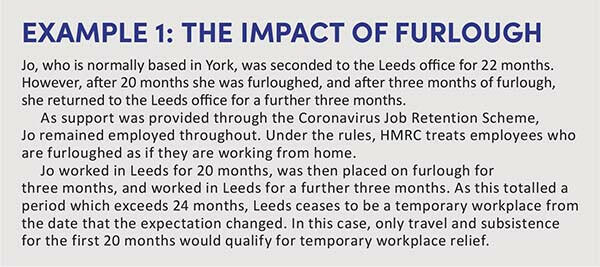

Get in touch
Employee travel and subsistence.

- May 18, 2022
With employees’ and directors’ P11d’s for 2021/22 due by 6 July 2022 it is timely to remind employers of the rules for travel and subsistence, particularly as HMRC have recently issued some updated guidance and useful examples of their interpretation of the law.
Tax relief for employee travel costs is available provided the journey isn’t ordinary commuting or private travel. Thus, amounts paid by the employer would not be taxable.
No relief is available for ordinary commuting, which is travel between home (or a place that is not a workplace) and a ‘permanent workplace’.
There are a number of criteria for determining if a workplace is temporary or permanent, but in general a workplace will always be a permanent workplace if the worker:
- regularly goes to the same workplace in the course of a period of continuous work which lasts or is likely to last more than 24 months, or
- regularly goes to the same workplace for all or almost all of the time for which the worker is likely to hold (or continues to hold) the same employment.
Where the journey qualifies for tax relief then necessary and reasonable subsistence costs associated with that journey would also qualify for tax relief, and if paid or reimbursed by the employer would not be taxable employment income.
Note that where expenses (such as travel and subsistence) are incurred wholly, exclusively and necessarily in the performance of the duties of the employment they no longer need to be reported on form P11d. A dispensation from reporting is no longer required but HMRC would expect there to be controls in place within the organisation to review and approve the expenditure.
Travel by workers operating via Personal service companies (IR35)
From 6 April 2016, new provisions changed the treatment of travel and subsistence expenses for workers providing their personal services to clients through employment intermediaries (IR35). Each engagement the worker undertakes that falls within IR35 is regarded as a separate and the worker’s travel and subsistence expenses are treated as if the worker was directly employed by the engager. This will mean that generally no relief will be given for home-to-work travel costs and associated subsistence. However, in certain circumstances, the new provisions are modified or disapplied.
Overarching contracts of employment where worker is supplied via an Agency
Temporary workers engaged under traditional employment agency contracts and caught by the agency legislation, are not entitled to relief for payment of travel and subsistence expenses, including home to work travel to a client’s work premises, as each assignment is deemed to be a separate employment and so each new place of work becomes a permanent workplace.
Many Employment Agencies have changed their business model and now put in place overarching contracts of employment to link the various assignments undertaken by workers supplying their services to various separate end-user clients at separate locations. The overarching contract of employment links together a series of separate assignments so that each location of each assignment becomes a temporary workplace. The worker effectively becomes a permanent employee of the employment agency under an overarching contract of employment.
If it is accepted that the contracts are overarching contracts of employment, then each new place of work will usually become a temporary workplace (subject to the “24 month rule”) and the individual’s travel and subsistence expenses would qualify for relief under the travel rules.
For details see: ESM5510 – Employment Status Manual – HMRC internal manual
Updated HMRC guidance on the scale of expenditure where accommodation and subsistence is paid for or reimbursed to employees
HMRC have recently updated their guidance and provided a number of examples setting out their interpretation of the law relating to reimbursed accommodation and subsistence costs and what they regard as reasonable. HMRC accepts that under certain circumstances it is acceptable to rent a flat near the temporary workplace rather than stay in a hotel.
See: EIM31838 – Employment Income Manual – HMRC internal manual
For more information and to discuss your tax affairs in further detail, please contact your usual Beavis Morgan partner , or email [email protected] .
Yaroslavl Tourism
- Things To Do in Yaroslavl
- Yaroslavl Itineraries
- Yaroslavl Hotels
Yaroslavl Trip Planner
Plan your customized day by day trip plan for Yaroslavl. Choose from various experinces categories as adventure, romantic and family and kids friendly for your trip using using Yaroslavl trip planner.
- THINGS TO DO
- HOW TO REACH
- TOP RESTAURANTS
- Moscow Trip Planner
- Yaroslavl Oblast Trip Planner

- Visit Our Blog about Russia to know more about Russian sights, history
- Check out our Russian cities and regions guides
- Follow us on Twitter and Facebook to better understand Russia
- Info about getting Russian visa , the main airports , how to rent an apartment
- Our Expert answers your questions about Russia, some tips about sending flowers


Russian regions
- Belgorod oblast
- Bryansk oblast
- Ivanovo oblast
- Kaluga oblast
- Kostroma oblast
- Kursk oblast
- Lipetsk oblast
- Moskovskaya oblast
- Orlovskaya oblast
- Ryazan oblast
- Smolensk oblast
- Tambov oblast
- Tula oblast
- Tver oblast
- Vladimir oblast
- Voronezh oblast
- Yaroslavl oblast
- Map of Russia
- All cities and regions
- Blog about Russia
- News from Russia
- How to get a visa
- Flights to Russia
- Russian hotels
- Renting apartments
- Russian currency
- FIFA World Cup 2018
- Submit an article
- Flowers to Russia
- Ask our Expert
Yaroslavl Oblast, Russia
The capital city of Yaroslavl oblast: Yaroslavl .
Yaroslavl Oblast - Overview
Yaroslavl Oblast is a federal subject of Russia, part of the Central Federal District. Yaroslavl is the capital city of the region.
The population of Yaroslavl Oblast is about 1,227,400 (2022), the area - 36,177 sq. km.
Yaroslavl oblast flag
Yaroslavl oblast coat of arms.
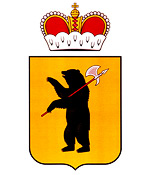
Yaroslavl oblast map, Russia
Yaroslavl oblast latest news and posts from our blog:.
13 January, 2024 / Unique 15-domed Church of St. John the Baptist in Yaroslavl .
18 May, 2021 / Yaroslavl - the view from above .
7 February, 2020 / Rybinsk - the view from above .
16 April, 2019 / Tutayev - the view from above .
10 March, 2019 / Evening in snow-covered Yaroslavl .
More posts..
History of Yaroslavl Oblast
The first people settled on the territory of the Yaroslavl region at the end of the late Paleolithic (about 22-15 thousand years ago), after the retreat of the last glacier, when its territory was covered by the glacial tundra, on which herds of mammoths grazed. At the beginning of the second millennium BC (Bronze Age), from the Middle Dnieper, the cattle-breeding tribes of the Indo-Europeans came to this region.
In the second half of the first millennium AD, the territory of the region was populated by the Merya. In the 9th-10th centuries, the Slavs began to settle in the Upper Volga region. The Yaroslavl region became the core of the Russian lands. The first Russian town in its territory was Rostov, which was mentioned in the chronicles in 862.
In 882, Kiev became the capital of the Russian lands and Rostov became the administrative center of the North-Eastern Russia (Rostov Principality). Among the famous princes of Rostov were Boris (one of the first Russian saints) and Yaroslav the Wise, who founded the town of Yaroslavl in 1010. According to the legend, Yaroslav subdued the local pagan tribes, when he axed the “sacred” bear they worshipped. The coat of arms of Yaroslavl reminds of this event.
From the second half of the 11th century, centrifugal tendencies were intensifying. The centers of four principalities were located on the territory of the Yaroslavl region. In 1238, the North-Eastern Russia was devastated during the Mongol invasion and became dependent on the Golden Horde.
More historical facts…
In the second half of the 13th - the beginning of the 14th centuries, the towns of the North-Eastern Russia were repeatedly ravaged as a result of raids. In 1463, the territory of the Yaroslavl region peacefully became part of the Grand Duchy of Moscow. After the foundation of Arkhangelsk, Yaroslavl became an important transit point on the way from Moscow to this northern port.
In the 17th century, the old Russian architecture was experiencing a new upsurge. In Yaroslavl, Rostov Veliky, Romanov-Borisoglebsk, Uglich, Kostroma, a lot of masterpieces of Russian architecture were created. The complex of Tolga monastery was formed, the center of which was the Vvedensky Cathedral (1681-1683). During the 17th century, more than 40 stone religious buildings were built in Yaroslavl.
The territory of the Yaroslavl region was badly damaged during the Time of Troubles. In 1777, Yaroslavl gubernia (province) was formed. In 1850, the Yaroslavl Tobacco Factory was established. In 1879, with the participation of Mendeleev, the Yaroslavl Oil Refinery was established. In 1870, the railway connected Yaroslavl with Moscow, and, in 1872 - with Vologda.
During the Civil War, there were no active military operations on the territory of the region, with the exception of the Yaroslavl and Rybinsk uprisings, which caused heavy damage to these towns.
After the forced industrialization of the 1930s, the sectoral structure of the local economy changed. Engineering and chemical industry became the main branches of the economy, while the traditional textile industry moved to the third place. In 1936, Yaroslavl Oblast was formed with the following three main cities - Yaroslavl, Rybinsk and Kostroma.
In 1944, Kostroma Oblast was separated from Yaroslavl Oblast. Since then, the boundaries of the region have not changed much. In 1935, the construction of the Rybinsk hydroelectric power station began, which led to the appearance of a vast Rybinsk reservoir on the Volga River and the flooding of the town of Mologa.
During the Second World War, more than 500,000 residents of the Yaroslavl region went to the front, more than 200,000 people were killed. After the war, the construction of the Rybinsk hydroelectric power station and the filling of the Rybinsk reservoir were completed.
In 1962, the Novo-Yaroslavl Refinery was opened, production of gasoline, fuel oil, kerosene, raw materials for the production of rubber, plastics, varnishes began. In this regard, the ecological situation in Yaroslavl deteriorated sharply. In the 1960s-1990s, Yaroslavl was invariably among the 50 most polluted cities of the USSR. In 1970, to the centenary of the birth of V.I. Lenin, a university was opened in Yaroslavl.
Classical Russian landscapes in Yaroslavl Oblast
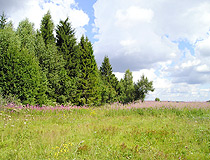
Summer in Yaroslavl Oblast
Author: Oleg Komarov

Haymaking time in the Yaroslavl region
Author: Andrey Zakharov
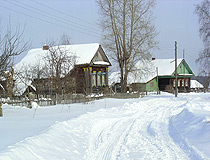
Winter in Yaroslavl Oblast
Author: Pershin S.V.
Yaroslavl Oblast - Features
Yaroslavl Oblast is located in the north of the European part of Russia, in the center of the East European Plain. The length of the region from north to south is 270 km, from west to east - 220 km. It has an advantageous geographical location - close proximity to Moscow and St. Petersburg.
The climate is moderately continental, with long cold winters and short warm summers. The average temperature in January is minus 11 degrees Celsius, in July - plus 18 degrees Celsius. The largest cities and towns of Yaroslavl Oblast are Yaroslavl (594,000), Rybinsk (179,600), Tutayev (39,500), Pereslavl-Zalessky (36,700), Uglich (31,100), Rostov (30,100).
The main natural resources are mainly building materials (sand, gravel, clay), peat and mineral waters. On the Volga River, there are two reservoirs: Uglich and Rybinsk (the largest in Central Russia). There are more than 80 lakes in the region, the largest of them are Lake Nero and Lake Pleshcheyevo.
On the territory of the region there are two specially protected natural territories of federal significance: the Darwin State Natural Biosphere Reserve and the National Park “Plescheevo Lake”.
Yaroslavl Oblast is one of the most industrialized regions in Russia. The leading industries are machine building and metalworking, food, chemical and petrochemical industries. This region is one of the largest dairy producers in the country (cheese, butter, cottage cheese, etc.).
The highway of federal significance M8 “Kholmogory”, connecting the region with Moscow, Vologda and Arkhangelsk, passes through the Yaroslavl region.
Tourism in Yaroslavl Oblast
Yaroslavl Oblast is the territory where Russian statehood, culture, language originated, the most important historical events took place, the region of ancient towns and classical Russian landscapes. In total, there are more than 5,000 monuments of history and culture.
The famous tourist route “Golden Ring of Russia” passes through Pereslavl-Zalessky, Rostov Veliky, Yaroslavl. The Volga River is the main cruise tourism route in Russia, cruise ships stop in Uglich, Myshkin, Rybinsk, Tutayev, Yaroslavl.
In 2005, the historical center of Yaroslavl was included in the UNESCO World Heritage List. All 11 towns of the Yaroslavl region, as well as the village of Borisoglebsky and the village of Velikoye are historical settlements. Their preserved architectural complexes have great scientific, cultural and aesthetic significance.
The Transfiguration Cathedral (1152) in Pereslavl-Zalessky is the oldest building in Central Russia. St. John the Baptist Church with 15 domes, located in Yaroslavl, is depicted on the reverse side of the Russian banknote of 1000 rubles.
In the Yaroslavl region there are more than different 250 museums. The largest museums are located in majestic architectural complexes:
- Federal Museum “Rostov Kremlin” occupies the territory of one of the best monuments of Russian architecture of the 17th century - the Bishop’s courtyard;
- Yaroslavl Historical, Architectural and Art Museum-Reserve is housed in the complex of the former Savior-Transfiguration Monastery;
- The territory of the Uglich Kremlin is occupied by the Uglich Historical, Architectural and Art Museum;
- Rybinsk Museum-Reserve is located in a beautiful building of the Bread Exchange.
The most popular non-state museums are the museum “Music and Time” in Yaroslavl, the Flatiron Museum in Pereslavl-Zalessky, the Museum of Myths and Superstitions in Uglich, the Museum of the Coachman in Gavrilov-Yam. Myshkin, a small provincial town, is known for its unique collection of mice. Connoisseurs of Russian literature are attracted by the former estate of N.A. Nekrasov “Karabikha”, and lovers of ecological tourism - by the national park “Plescheevo Lake.”
This region is a traditional venue for numerous exhibitions and festivals, in particular the festival of choral and bell music “Transfiguration”, the music festival “Jazz on the Volga”, the international Volkov Festival of Provincial Theaters and others. The main Maslenitsa of Russia is celebrated in Yaroslavl. In July, in Pereslavl-Zalessky, the International Festival of Aeronautics “Golden Ring of Russia” is held.
The lives of many famous Russians were linked with this land. Prince Alexander Nevsky was born in Pereslavl-Zalessky. The village of Varnitsa, located near the town of Rostov, is the birthplace of St. Sergius of Radonezh. On Pleshcheevo Lake, young Peter I laid the foundations of the Russian fleet. Valentina Tereshkova, the world’s first woman cosmonaut, was born in the village of Bolshoe Maslennikovo in Tutaevsky district.
Yaroslavl oblast of Russia photos
Yaroslavl Oblast scenery
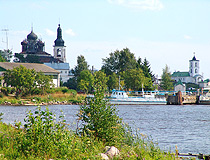
Yaroslavl Oblast - a great place for a river cruise
Author: Christian Pellegrin
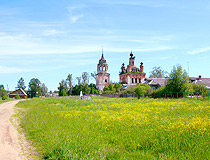
Country life in the Yaroslavl region
Author: Chastov Oleg
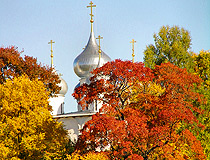
Golden autumn in Yaroslavl Oblast
Author: Marilyn Whiteley
Yaroslavl Oblast views
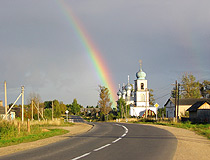
Village in the Yaroslavl region
Author: Savinov Sergey
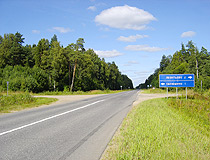
Paved road in Yaroslavl Oblast
Author: Mihail Selifontov
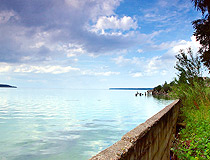
Author: Mikhail Grizly
Pictures of the Yaroslavl region

Yaroslavl Oblast landscape
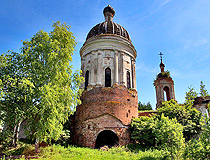
Abandoned church in Yaroslavl Oblast
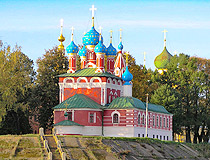
Beautiful churches of the Yaroslavl region
The comments of our visitors
- Currently 2.88/5
Rating: 2.9 /5 (153 votes cast)
- Bahasa Indonesia
- Slovenščina
- Science & Tech
- Russian Kitchen
Yaroslavl: The Volga’s most ancient town
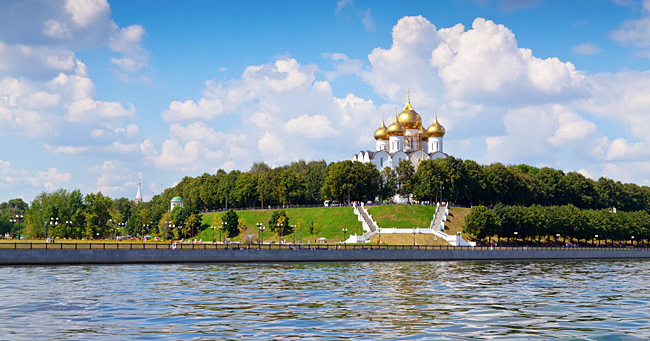
Assumption Cathedral in Yaroslavl. Source: Lori/Legion-Media
Vibrant layers of history and culture make Yaroslavl a great destination for a time travel through the centuries. Yaroslavl’s center (282 kilometers from Moscow) is included on the list of UNESCO’s World Heritage Sites and is the birthplace of the first Russian theater. But that’s not all there to see in this unique and vibrant provincial town. RIR has developed a special route to take you to the city’s key sights from the 13th century through the 21st. 13th-17th centuries: Yaroslavl State Historical and Architectural Museum-Preserve
The most ancient structure in the city is the Transfiguration Monastery, which was erected on 13th-century foundations. It was one of the favorite monasteries of Ivan the Terrible and was turned into a museum 150 years ago. There are six churches open to the public on the territory that has been created to resemble 18th-century regional architecture.

The Transfiguration Monastery in Yaroslavl Museum-Preserve. Source: Lori/Legion-Media
The artists who painted the monumental landscapes were the first in the history of Russia to sign their work setting an example for future generations of talented Russian artists. Here you can see numerous ancient Russian icons and the very first printed edition of "The Song of Igor's Campaign," Russia’s most famous literary achievement of the Middle Ages.
A 27-year-old bear, Masha, lives on the premises in a special enclosure with its own bath and amusements. She represents the symbol on Yaroslavl’s coat of arms of a brown bear characteristic of Russia. Masha has a temper and is not what one would call an easy-going bear: 10 years ago she bit off the foot of one of her keepers.

The Church of St. John the Baptist in Yaroslavl Museum-Preserve. Source: Lori/Legion-Media
Take a pair of binoculars to check out a pearl of ancient architecture - the Church of St. John the Baptist - from the belfry of the Yaroslavl Museum-Preserve. A view of this church is familiar to every Russian as it is depicted on the 1,000-ruble banknote.
UNESCO encourages tourists to take a closer look at this church. Its exterior is a fantastic silhouette of a huge Orthodox Church with 15 domes. The interior is peerless in the world of art with tiles, patterns and paintings depicting an encyclopedia of Biblical scenes. Practically the entire population of the city and the surrounding area participated either financially or physically in its construction in the 17th century.
16th century: « Ivan Vasilievich »
This club and restaurant features delicious Russian food and bright design in tribute to one of the Soviet Union’s most famous comedies, "Ivan Vasilievich: Back to the Future." The interior is recreated to humorously resemble apartments of the 1970s and chambers of the era of Ivan the Terrible. Its price, when compared to Moscow restaurants, is a nice surprise.
18th century: The Volkov Theater, Russia’s first

The Volkov Theater in Yaroslavl. Source: Lori/Legion-Media
The oldest theater in Russia began with performances by young activists in a Yaroslavl tanning barn 250 years ago. Soon Fyodr Volkov, the leader of the group and the son of a merchant, was summoned by Catherine the Great to St. Petersburg. The founder of the first Russian theater never returned to the city. However, his mission continued in Yaroslavl, and now the Volkov is one of the biggest and most famous theaters in provincial Russia. Several years ago, the theater began orienting itself towards contemporary playwrights and young directors. It has become one of the best places to see innovative theater performances in contemporary Russia.
19th century: Governor’s house

Governor's house, Yaroslavl art museum. Source: Lori/Legion-Media
This house was built in the 19th century for Emperor Alexander I as a resting palace when taking long trips. It later became the official residence of the governor, and now hosts one of Yaroslavl’s best art museums.
The pride of the museum is its rich collection of examples from the Yaroslavl school of icon painting. Other notable exhibits include provincial portraits, works from the Parisian period of famous Russian artist Konstantin Korovin and canvases by Russia’s avant-garde. The museum annually hosts many events, lectures and exhibitions. Five years ago during a renovation, an arc from a secret underground passage from the Governor's house to the grotto under the observation deck of the Volga embankment was found. Twenty years ago the museum was given an award recognizing it as being the best provincial museum in Russia.
20th century: Damansky amusement park and the Brooklyn Bridge

The Damansky bridge, Yaroslavl. Source: Lori/Legion-Media
On a dark winter night this Soviet-era amusement park looks like the perfect location to shoot a horror movie. But during the daytime the park captivates visitors with its provincial charm and surprisingly low prices. The roller coaster Golden Arrow is considered one of the most thrilling in the world and is the highest in Russia. To get to the amusement park take the Damansky Bridge, which leads to the island of the same name. The crossing is often referred to by locals as the “Brooklyn Bridge.”
Music and Time museum
This museum is very popular among foreign travelers to Russia. Here one can find the largest public display of antiques anywhere in the country. The collection includes vinyl records and gramophones, bells and chimes, irons and samovars, music boxes and phonographs. A private museum, Music and Time was founded 22 years ago by the collector, actor and magician John Mostoslavsky. If you’re lucky he will personally guide your tour, which turns the exhibits into a real show.
A monument to the Holy Trinity
Before this controversial sculpture was created, only Christ was allowed to be depicted in stone according to Orthodox traditions. Exceptions were made for a small number of saints and historical figures such as Prince Vladimir and St. Sergius of Radonezh.

A monument to the Holy Trinity, Yaroslavl. Source: Lori/Legion-Media
Yaroslavl’s most famous modern artist and a member of the Presidential Council for Culture, Nikolai Mukhin, and his colleague Treivus have created something stunning - a stone-carved portrait of Trinity angels that visit Abraham and his wife. It is a scene from the Old Testament. The sculpture is a bold attempt to interpret the great sculptural icon by medieval icon painter Andrei Rublev that bears the same name. It is Russia's only sculpture of the Holy Trinity. It is impossible to gauge how people would have reacted to such a violation of the religious canons in the past. However, the sculpture was consecrated by the former Patriarch of Moscow and All Russia, Aleksiy II.
Today the monument is considered one of Yaroslavl’s top five attractions. The sculpture was installed 20 years ago and shortly thereafter became a traditional place for newlyweds to make a wish and throw a coin into a cup.
21st century: The Volga embankment

The gazebo at the Volga embankment, Yaroslavl. Source: Lori/Legion-Media
Today a park arrow marks the place where the Volga and Kotorosl rivers meet - the very spot where Yaroslavl was founded 1,000 years ago. This arrow points in the direction of the best route for exploring the city’s main promenade - the Volga embankment.
Along the way you will see the sculpture of the Holy Trinity, the Damansky Bridge leading to the amusement park, and the so-called "Temple of Love." This elegant 19th-century garden bench was built on the site of a Chinese pavilion. Locals say that back in the day Yaroslavl’s governor liked to come here to drink tea and share it on Sundays with anybody that came.

A park arrow at the place where rivers Volga and Kotorosl meet. Source: Lori/Legion-Media
Today this is a popular meeting spot for couples, to take wedding photos and to even propose marriage itself. Recently the city authorities banned the fastening of locks here, a popular ritual on wedding days, because they impede the surrounding views of the late classicist architecture. As an alternative, newlyweds have started planting "trees of love." But the place is still symbolic and lovers come here to kiss and spin around on the grass in anticipation of a happy future together. The gazebo of love is one of the best places in Yaroslavl to view the Volga.
All rights reserved by Rossiyskaya Gazeta.
to our newsletter!
Get the week's best stories straight to your inbox
This website uses cookies. Click here to find out more.
Cookies on GOV.UK
We use some essential cookies to make this website work.
We’d like to set additional cookies to understand how you use GOV.UK, remember your settings and improve government services.
We also use cookies set by other sites to help us deliver content from their services.
You have accepted additional cookies. You can change your cookie settings at any time.
You have rejected additional cookies. You can change your cookie settings at any time.
DWP policy on expenses for business travel and accommodation for Contractors, Interim Managers and Consultants
DWP's policy on reimbursing necessary and reasonable business travel and accommodation costs
The Department for Work and Pensions ( DWP ) will reimburse necessary and reasonable business travel and accommodation costs incurred whilst undertaking duties on behalf of DWP and delivering requirements to DWP , where this is agreed as part of the contractual terms.
The term Contractor throughout this document applies to any external Contractors (this includes Contingent Labour, Consultants and Supplier Staff).
Updates to this page
Sign up for emails or print this page, is this page useful.
- Yes this page is useful
- No this page is not useful
Help us improve GOV.UK
Don’t include personal or financial information like your National Insurance number or credit card details.
To help us improve GOV.UK, we’d like to know more about your visit today. Please fill in this survey (opens in a new tab) .

IMAGES
VIDEO
COMMENTS
The employment intermediaries travel expense provisions apply regardless of how workers are remunerated. The changes From 6 April 2016, section 339A has been introduced into ITEPA.
The employment intermediaries travel expense provisions are modified ESM5580 when a worker personally provides their service through an intermediary which needs to consider and may be subject to ...
From 6 April 2016, the employment intermediaries travel expense provisions apply when a worker: personally provides services to another person (the client) which are not excluded services [ ESM5540 ]
EIM80400 - Travel and subsistence expenses for employees employed by "employment intermediaries" (from 6 April 2016) - application to companies within Chapter 8 (IR35) - conditions to be satisfied where employment intermediary is a company The conditions which apply where the intermediary is a company are amended for the purposes of
9 Travel expenses of workers providing services through intermediaries (1) In Chapter 2 of Part 5 of ITEPA 2003 (deductions for employee's expenses), ... "339A Sections 338 and 339: employment intermediaries (1) This section applies where an individual ("the worker")— ... PAYE regulations may make provision for, or in connection with, the
2. New section 339A amends the provisions in the Income Tax (Earnings and Pensions) Act 2003 (ITEPA) allowing deductions from earnings made for travel and subsistence expenses. The amendments apply only where a worker is engaged through an employment intermediary. 3. Prior to this amendment, the test contained in new section 339A intended to ...
Background. The costs of travel and subsistence are an allowable deduction for employees only if the travel is to or from a place other than the employee's permanent workplace in order for the employee to perform the duties of his employment. The costs of commuting between the employee's home and a permanent workplace are not deductible ...
The employment intermediaries travel expense provisions are modified when a worker personally provides their service through an intermediary which needs to consider and may be subject to the ...
From April 2016, Income Tax (Earnings and Pensions) Act 2003 (ITEPA) section 339A - Travel for necessary attendance: employment intermediaries - restricts access to relief for home to work travel and subsistence where a worker: is under (the right of) the supervision, direction or control of any person, in the manner in which they undertake ...
This does not take into account that when the employment intermediaries travel expense provisions apply (ITEPA 2003 s 339A), it should be remembered that each engagement will be treated as a separate employment for the purposes of the travel expenses rules (see ITEPA 2003 ss 338, 339 and 339A of ITEPA, and the corresponding NICs disregard in ...
From 6 April 2016, new provisions changed the treatment of travel and subsistence expenses for workers providing their personal services to clients through employment intermediaries (IR35). Each engagement the worker undertakes that falls within IR35 is regarded as a separate and the worker's travel and subsistence expenses are treated as if ...
2. Introduction. Autumn Statement 2014 announced that the government would review the use of overarching contracts of employment (OAC) by employment intermediaries in the temporary labour market to take advantage of the rules for travel and subsistence expenses. These arrangements mean that some people are able to benefit from tax relief on ...
Get, set and plan a journey with this amazing travel planner for Yaroslavl that shall leave you with plenty of memories at the end of your trip. Yaroslavl Trip Planner. Plan your customized day by day trip plan for Yaroslavl. Choose from various experinces categories as adventure, romantic and family and kids friendly for your trip using using ...
Find at least one bear-with-ax figure, the symbol of the city. Visit the Yaroslavl Museum Reserve, and see the city's main places of worship. Go to the Church of Elijah the Prophet (the city was ...
Impact of the employment intermediaries travel expense provisions on a worker's own PSC (which is not an MSC) and examples ... Arrangements to avoid the application of the employment ...
Yaroslavl Oblast is located in the north of the European part of Russia, in the center of the East European Plain. The length of the region from north to south is 270 km, from west to east - 220 km. It has an advantageous geographical location - close proximity to Moscow and St. Petersburg. The climate is moderately continental, with long cold ...
Guidance about the treatment of travel expenses for workers providing personal services to clients through employment intermediaries - changes from April 2016.
employment intermediary, such as an umbrella company or a personal service company (PSC)). 1.2 The proposed restrictions are aimed at preventing temporary workers who are employed through employment intermediaries, and their employers, from benefiting from tax and NICs relief on their expenses for ordinary home-to-work commuting.
Those lucky enough to see Yaroslavl for the first time at daybreak call it the pink city. An ancient Russian settlement with a 1,000-year history, it is also one of the Golden Ring's eight towns.
From 6 April 2016, when the employment intermediaries travel expense provisions apply, each engagement undertaken will be considered a separate employment for the purposes of travel and subsistence.
The Department for Work and Pensions (DWP) will reimburse necessary and reasonable business travel and accommodation costs incurred whilst undertaking duties on behalf of DWP and delivering ...